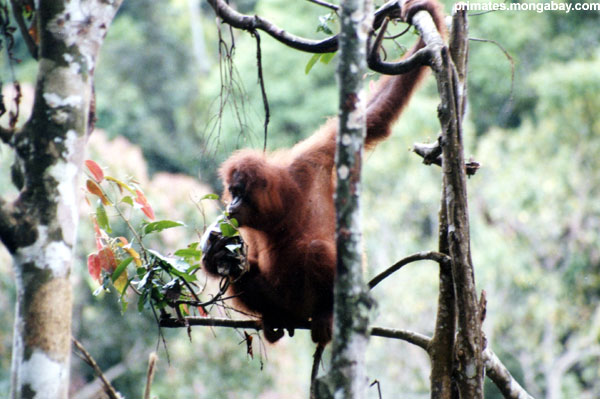GAINESVILLE, Fla. — Comfortable living is not why so many different life forms seem to converge at the warmer areas of the planet.
Writing this week in the Proceedings of the National Academy of Sciences, scientists say higher temperatures near the equator speed up the metabolisms of the inhabitants, fueling genetic changes that actually lead to the creation of new species.
The finding — by researchers from the University of Florida, the National Center for Ecological Analysis and Synthesis, Harvard University and the University of New Mexico at Albuquerque — helps explain why more living species seem to exist near the equator, a scientific observation made even before naturalist Charles Darwin set sail to South America on the H.M.S. Beagle nearly two centuries ago.
“We’ve shown that there is indeed a higher rate of evolutionary change in the form and structure of plankton in the tropics and that it increases exponentially because of temperature,” said James Gillooly, an assistant professor of zoology with the UF Genetics Institute. “It tells us something about the fundamental mechanisms that shape biodiversity on the planet.”
Speciation — when animals or plants actually evolve into a new species — occurs when life forms with a common ancestor undergo substantial genetic change.
Using a mathematical model based on the body size and temperature-dependence of individual metabolism, the researchers made specific predictions on rates of speciation at the global scale. Then, using fossils and genetic data, they looked at rates of DNA evolution and speciation during a 30-million-year period in foraminifera plankton, a single-celled animal that floats in the ocean. Researchers compared arrivals of new species of this type of plankton with differences in ocean temperatures at different latitudes ranging from the tropics to the arctic. The results agreed closely with predictions of their model.
To put a number on it, it takes about 10 to the 23rd power — that is a 1 followed by 23 zeros — of energy units called joules to generate a new species of foraminifera plankton.”
By observing changes in a unicellular animal whose body temperature varies according to its surroundings, as opposed to a mammal, which regulates a constant body temperature, scientists could more precisely measure rates of speciation caused by the environment. In the end, it is individual metabolic rate — how fast an organism burns food relative to its body weight — that primarily determines evolutionary rate. And higher environmental temperatures help increase metabolism.
One of the novel insights in the paper is the finding that the energy required to produce a new species is a fixed quantity.
“These authors are changing evolutionary biology, ecology and biogeography, putting them into a firm and quantitative foundation based on the first principles underlying individual metabolism,” Marquet said.


No comments:
Post a Comment